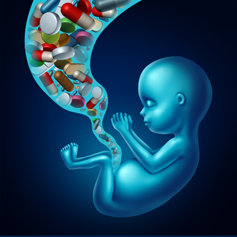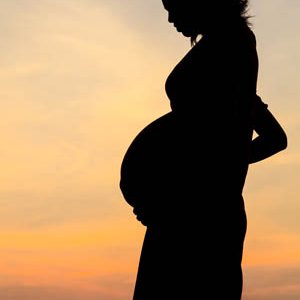Prenatal Drug Use Effects May Show Up Long After Birth

When women who use drugs find out they are pregnant, they make a choice. Some of them choose to stop using drugs for the health of the baby, even if it’s hard. Some women want to and may try to stop using but find it too hard, so their babies are exposed to their drug use. Other women—perhaps those completely lost to their addictions—may feel their only choice is to simply hope for the best because they have no resources to help them during this time and they may have lost hope of ever getting sober themselves.
And so it is that in parts of the country with heavy opioid abuse problems, many babies are struggling through weeks of withdrawal sickness after they are born. This condition is called “Neonatal Abstinence Syndrome,” or NAS. The babies manifest withdrawal sickness similar to what any addicted adult would go through if they couldn’t get their hands on their drugs of choice.
But with lots of care by hospital staff and volunteers, these babies make it through their withdrawal and go home. What then? Does their prenatal drug exposure leave any lasting traces?
Two recent studies indicate that they may indeed have effects that can be measured in these children’s teenage years.
Teenage Drug Use and Prenatal Exposure
Studies published in 2006 and 2010 sought to determine if the mother’s drug use during pregnancy could serve as a predictor of the child’s inclination to use drugs when he reached his teens. In both studies, pregnant women who used drugs were enrolled and followed through their pregnancies. As the children aged, they were interviewed and drug tested using either hair, urine or sweat.
One of these studies followed marijuana-using mothers and the other recruited cocaine-using pregnant women.
The fact of birth defects resulting from drug use is well known, but these two studies wanted to find out if prenatal exposure would be a predictor of the child’s drug use when he (or she) reached his teens, specifically 14 or 15 years of age.
In the study of marijuana-using mothers, prenatal exposure turned out to be a significant predictor of marijuana use by the child. Not only were these children more likely to use marijuana by the time they reached 14, but they were also more likely to have started younger overall than other children who were not exposed.
Prenatal marijuana exposure also had a relationship with the frequency of the child’s marijuana use. The study found that children exposed to one joint a day prenatally were 1.3 times more likely to be more frequent marijuana users.
Effects of Prenatal Cocaine Use

A very similar study recruited pregnant cocaine users and followed them and their children until the kids reached 14. When the children’s mothers used “some” cocaine during pregnancy, 43% of the children tested positive for cocaine. When the mothers reported “heavy or persistent” cocaine use, 40% of those teens tested positive.
For comparison, a number of other teens with similar characteristics were tested for cocaine use and only 22% of them tested positive.
These studies point out that a mother’s drug use can have repercussions that last the child’s whole life. How many of these youth will become addicted? How many will die from a cocaine overdose or wind up in an emergency room after heavy marijuana use? Just by helping women who are or might become pregnant get sober, drug use in the next generation might be able to be reduced.
In a Relationship with a Drug-Using Mother-to-Be?
The best thing you can do for both her and her child is to help that woman arrive at the front door of a rehab program with a good record of success and then support her as she builds a new, sober life. While every life is incredibly valuable, a woman of child-bearing age impacts her own life as well as the entire future life of the child she may bear. If you need help finding rehabilitation for a woman you care about, call Narconon Ojai today.


